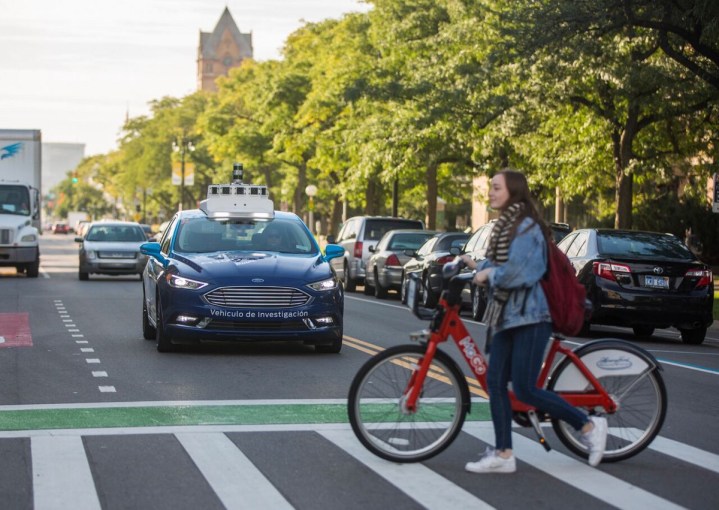
Passengers riding in a self-driving car will still be able to steer, according to a video game-like patent Ford obtained in the United States. The company calls this puzzlingly futuristic technology non-autonomous steering modes.
Discovered by website CarBuzz, the patent outlines two different ways to steer an autonomous car using a smartphone. At its core, it’s an over-the-air system that receives input from the user’s smartphone and turns the wheels accordingly. First, the user needs to submit a request to steer the vehicle. The onboard computer either approves or denies the request, though how it makes a decision is unclear. If the request is approved, the car asks the passenger to select “first autonomous steering mode” or “second autonomous steering mode.”
This is where real life and racing simulators cross paths.
First autonomous steering mode relies on a gyroscope and an accelerometer — two components found in virtually every smartphone made in 2018 — to turn the device into the in-car equivalent of a Wii controller. It interprets the smartphone’s movements and reacts accordingly. For example, turning the phone by 10 degrees will, in theory, turn the front wheels by 10 degrees. Passengers will need to remain highly alert when using this mode; dropping the phone could have disastrous circumstances.
Second autonomous steering mode starts by asking the user to align his or her device with the angle of the front wheels. It then displays a virtual steering wheel on the smartphone’s screen and asks the passenger to use swiping motions to steer the car. Either way, there is never a physical connection between the smartphone and the wheels.
What remains to be seen — and what the patent doesn’t clearly explain — is the purpose this technology serves. One plausible answer is that it could help riders take control of the car in the event of an emergency. Otherwise, building a car without a physical steering wheel and looping around to add a smartphone-based steering wheel sounds as counter-intuitive as ordering a Coke with no ice and asking for a glass of ice on the side.
Ford hasn’t commented on the patent so it’s too early to tell when — or if — the technology will reach production. It’s important to note that automakers routinely apply for patents ranging from mild to wild without plans to mass-produce any of the features they detail. Ford’s research and development department has worked overtime; it even invented an autonomous police car and conceived a steering wheel that transforms into a laptop mount.



